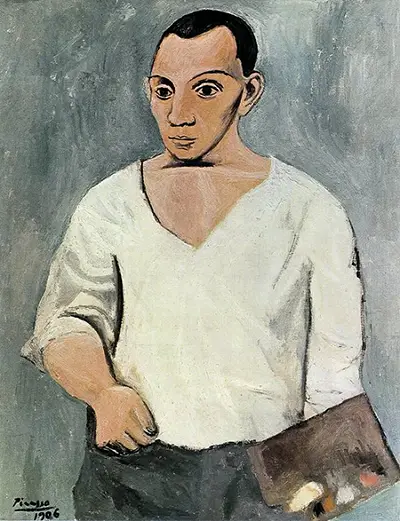The background is cold, blue gray and indistinct, allowing the figure to stand out with its strong youthful pose. The initial drawings for the painting included brushes in the artists hand but Picasso painted over these when completing the painting.
In his other hand the artist holds a palette and its pleasing that the colours on the palette are obviously the ones Picasso used for the painting.
This simplicity of the palette is probably one of the most pleasing things about this painting. There is no unnecessary decoration to detract the viewers eyes away from the artists face and in particular the intensity of the eyes.
This self portrait is considered to represent a turning point in the artist's life. It is thought that the painting was started at around the same time that Cezanne passed away and Cezanne was a powerful and significant influence on the young Picasso.
It holds a passing similarity to a self portrait done by Cezanne himself, "Self Portrait with Palette" in 1885, where the artist is seen face on, holding a square palette.
In both paintings there is a flatness and bold use of brush strokes, confident blocks of colour giving a cohesiveness to their lone subject matter. Hard dark outlines are used to hold in the blocks of colour and give a sharpness to both compositions.
Self Portrait With Palette was painted at the end of what is known as Picasso's Rose Period during which time he had become more confident and satisfied with his life. Gertrude Stein, a wealthy novelist, playwright and art collector had become one of Picasso's valued patrons and he was to paint a portrait of her called "Portrait of Gertrude Stein" in 1905.
Through Gertrude Stein, Picasso would go on to meet Henri Matisse and also be introduced to Claribel and Etta Cone who would go on to become patrons of his work. His work was regularly exhibited in Gertrude Steins Salon in Paris and this was to give the artist more valuable exposure.

